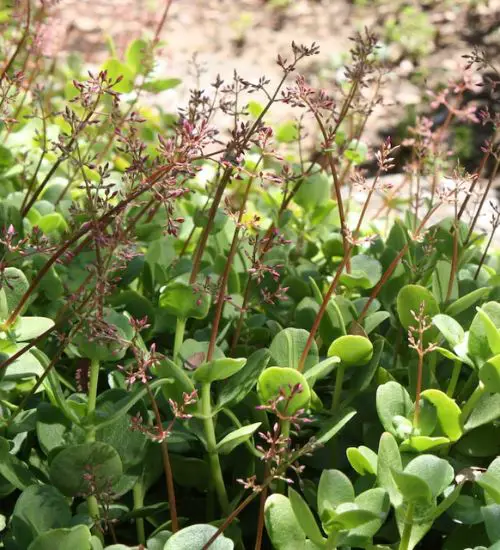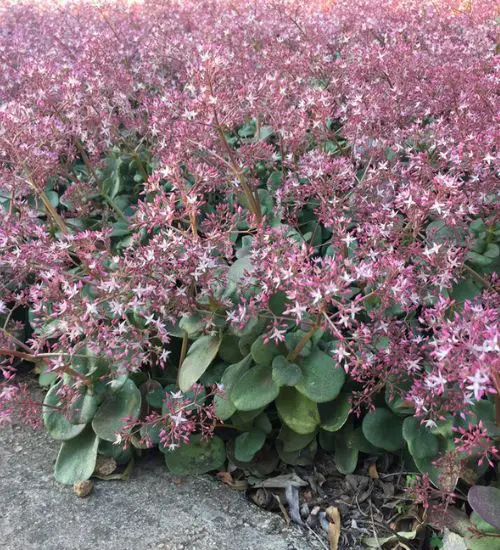Sun: full sun to partial shade
Water: Typical water needs for a succulent
Temperature: Zone 1a from -60° F to -55° F (-51.1 ° C to -48,3° C) to Zone 11b from 45° F to 50° F (7.2° C to 10° C)
Winter Survival: Not cold hardy
Propagation: offsets, cuttings, division
Flower: in late winter or early spring
Flower Type: purple, white or cream
Toxic: Can be toxic to humans and animals
Dormant: summer
Space Requirement: Indoors
Common Problems: Plants may rot if overwatered, pests
Where to buy Crassula multicava?
Basc Care for Crassula multicava
Watering
Watering for Crassula multicava is a simple task. It requires Typical water needs for a succulent.
You can water your succulent more than often in extreme conditions but make sure that the soil is completely dry before watering your succulent again.
Fertilizing
Only feed this succulent during its active growing seasons which means winter. Use the right fertilizer applied in the right amounts. Applying half-strength balanced fertilizer every month or so is recommended for optimal results.
Do not fertilize during summer as the plant is dormant.
Sun & Location Requirements for "fairy crassula, pitted crassula and London pride"
Crassula multicava requires full sun to partial shade. It's best to keep it in an area of your garden or home that gets plenty of bright, indirect sunlight throughout the day. When temperatures are too hot and direct sunlight is too intense, try moving "fairy crassula, pitted crassula and London pride" to a shadier spot for part of the day.
When temperatures drop below freezing, it is important to take precautions to protect Crassula multicava from the cold. Insulating and providing adequate drainage for the plant are key elements in helping it survive winter weather. Wind and sun exposure should also be minimized to prevent frost damage.
Any succulents in the group will only need minimal space to grow. You can place your pot at your table or window. Outdoors is also a nice idea to put your pot.
Crassula multicava also benefits from some indirect light throughout the day as well, so make sure you give it enough space to soak up light without becoming too exposed to heat.
Propagation
One way to propagate Crassula multicava is by offsets. Taking an offset from the mother plant and potting it into soil will give you a brand new succulent with minimal effort.
One way to propagate Crassula multicava is by cutting
Toxicity

The toxicity of Crassula can vary depending on the individual species, but all species are potentially dangerous if ingested. Symptoms of poisoning may include vomiting, abdominal pain, diarrhea and dizziness. If you believe someone has ingested parts of Crassula multicava, seek medical help immediately.
Pests and Diseases
Crassula multicava can be affected common pests and diseases like most of the other succulents such as scale insects and Red spider mites.
If you do spot any of pest signs, you can treat your succulent using below methods.
- Scale insects: quarantine, clean infected plants, soapy water.
- Red spider mites: Quarantine, clean your infected plants, treatment with a systemic insecticidal/soapy water.
Besides that, to prevent serious health issues from happening, keep your succulent in a well-ventilated area and check it regularly for any signs of pests or health problems.


